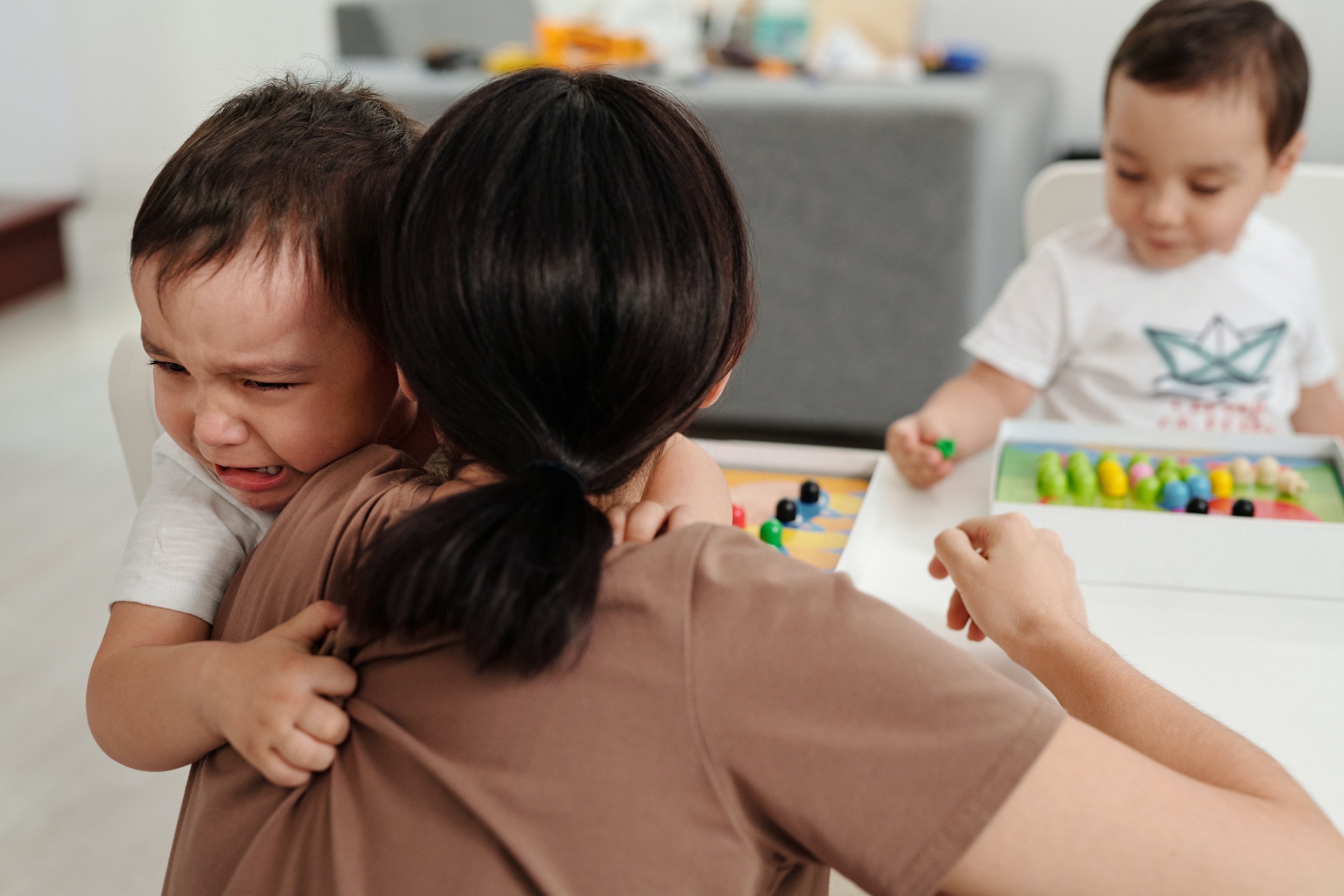
BLOG POSTS
Who's hustling? Why? What else is there?
Egg rolls take time, and I haven’t made them in years. As I made them, I thought about how I begged my mother to make them pretty much any time someone said, “What will we have for dinner?” Mostly my mother said, “Not today” which makes perfect sense to my adult self. Today if I am going to make them, I need a nice clear schedule, with nothing else happening afterwards.
Recently I found myself with only one client hour on a Saturday – a rarity for me. Of course, I still went to my office and spent too much time looking at email and all of that*, but it felt different, more relaxed. After I was done, I went home and felt relaxed enough to make Korean egg rolls (with my own modifications).
Image shows my red pot with zucchini, carrots, peppers and garlic, ready to go into egg rolls
Image shows a bowl with chop chae noodles, bean sprouts and fake meat ready to mix
Egg rolls take time, and I haven’t made them in years. As I made them, I thought about how I begged my mother to make them pretty much any time someone said, “What will we have for dinner?” Mostly my mother said, “Not today” which makes perfect sense to my adult self. Today if I am going to make them, I need a nice clear schedule, with nothing else happening afterwards. Besides eating them.
I feel similarly about writing – it takes time, and I need a fair bit of space in my day before I will even start that creative process. Which reminded me about my commitment to moving from “hustle to flow” as Shawn Ginwright suggests in The Four Pivots. What he said about hustling and how it drives many of us forward fit me and my life perfectly. And I liked his thoughts on flow, on how to find ease in our lives, how we can work with what we have rather than trying to push and try to make everything fit somehow.
But even as I was (re)dedicating myself to finding my flow, I thought about what a privilege it is to be in a place where I can think about finding flow. I left home at 17, and I have hustled hard* almost all the years since then. That hustle feels like it’s in my bones, like if I have too much down time, I get antsy.
Image shows my egg rolls in rice paper wrappers, ready for the next step, frying.
It’s not an accident or poor decisions that got me to this point, much as the world would like me to believe it. This world is full of so much push – it comes from patriarchy, productivity culture, ableism – and for many of us if we didn’t hustle, we wouldn’t make it (and I don’t mean that like, “succeed in life,” I mean that like, “survive”). I still work multiple jobs*, trying to make sure that if the bottom falls out, I will land in one piece.
Image shows a close up of a bitten egg roll, veggies all sticking out of the top. Behind the egg roll is Maite the Rottweiler, hoping for a bite.
I don’t have any easy answers for us hustlers. I don’t know how to create flow in a packed schedule. I don’t have tips or strategies. I can’t even write this piece without praising my own hustle.
How is this all related to egg rolls? Egg rolls need time to create, and because I switched to rice paper I had to seriously slow down (rice paper is NOT in a hurry). And I wouldn’t have made them (or written this little post) if I hadn’t had a little extra space. Time to enjoy my creations!
* see how even in the beginning I’m trying to prove that I’m still hustling?
* more evidence of my hustling
* yes, hustling
Image shows a stack of fried egg rolls, 8 of them. They are kind of see through because of the rice paper wrappers, so the green zucchini and the orange carrot and the yellow bean sprouts are visible. It is also the banner image.
What good are feelings?
Emotions are not some kind of cosmic error. They exist for our benefit. Emotions tell us (sometimes before our brains get there) to move away or towards people, situations, and ideas. They are a kind of compass for our lives. But only when we allow them to be so. Curious about how that works?
On social media the other day, there was a post from a new parent friend of mine about why people insist on telling children not to cry, or to stop crying, or even to calm down. There were a lot of comments, and I think most folx got that telling kids (or anyone, really) "don't cry" is not particularly helpful.
If you aren't sure, I invite you to do a little thought exercise with me. Imagine you are right in the middle of your favorite rant. You are telling this person just how important this issue is, when all of a sudden, they say, "Calm down." Even if they say it calmly, chances are good that you will feel anything but calm.
Image shows a wall with Calm Down written in script with an arrow pointing down underneath. The words are back lit.
Besides possibly intensifying their emotions, telling children to stop crying isn't particularly effective, at least not at first. If you do it often enough, and with enough intensity, children will learn, in fact, to hold in their tears. Or to hide them. But is this what we really want for children? Are we hoping to shut down their emotions?
I've also witnessed grown-ups saying things like, "I see that you are mad/sad/upset" when they see children crying. I think it's in part about identifying feelings for children- and it often seems to backfire. And I worry sometimes that we are rushing children into their heads too quickly.
Emotions are not some kind of cosmic error. They exist for our benefit. Emotions tell us (sometimes before our brains get there) to move away or towards people, situations, and ideas. When we are having an emotion, the most important thing is the emotion itself. They are a kind of compass for our lives. But only when we allow them to be so. Curious about how that works?
First, when children are crying, we as adults can allow them to feel that emotion (vs asking them to stop crying or trying to soothe them or cheering them up). We can sit quietly, maybe make observations, "I see you crying" or "This seems hard." If we saw what we think caused the distress, we could ask, "Is this about falling down?" But mostly it works best if we can just be with children, witness their tears, and offer our support, "I'll stay with you."
Image shows the same people from the banner photo, this time the female caregiver is holding the crying child. The other child continues to play/work with their toys.
When they start to feel better, we can offer space to talk - but not require it. Allowing them a safe place to talk about what happened makes it possible for them to start to understand where their feelings come from and how to share those feelings with others. Over time, children learn that feelings are okay to have - and even better - that their feelings give them important information about themselves and the world.
What are your emotions telling you these days?
Banner photo: Image shows three light brown people with dark hair, two toddlers and a grown up who appears female (you can only see the side of their face). The two children each have a peg board game in front of them. The child on the left is crying, while the other is looking down at the board. The photo is from Jep Gambardella at pexels.











